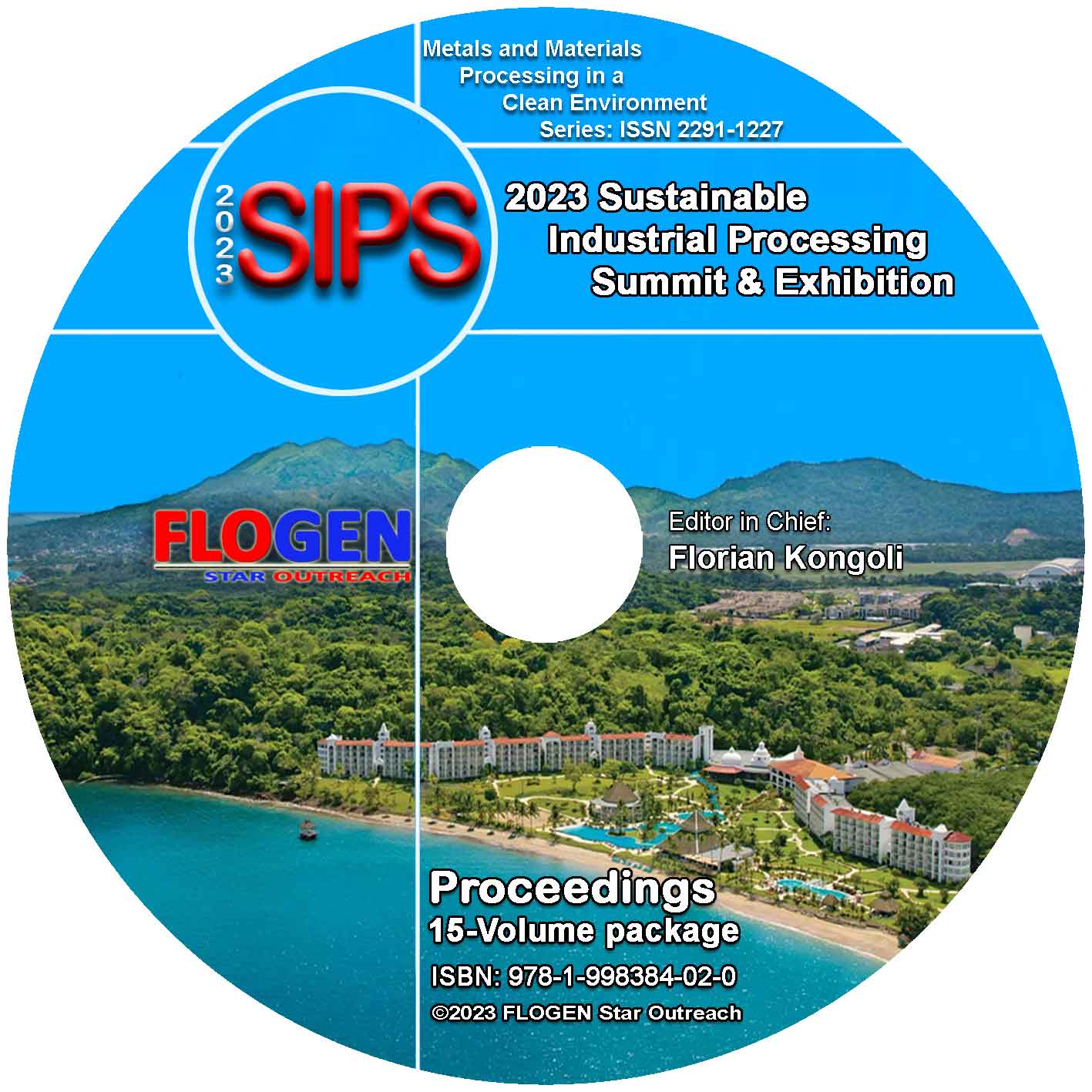2023-Sustainable Industrial Processing Summit
SIPS2023 Volume 8. Poeppelmeier Intl. Symp. / Solid State Chemistry
| Editors: | F. Kongoli, M. Delferro, P. S. Halasyamani, M. A. Alario-Franco, F. Marquis, A. Tressaud, H. Kageyama |
| Publisher: | Flogen Star OUTREACH |
| Publication date: | 21 December 2023 |
| Pages: | 144 pages |
| ISBN: | 978-1-989820-86-5 (CD) |
| ISSN: | 2291-1227 (Metals and Materials Processing in a Clean Environment Series) |

CD shopping page
DEVELOPMENT OF HYDRIDE-ION CONDUCTORS TOWARD NEW ELECTROCHEMICAL REACTIONS
Fumitaka Takeiri1; Genki Kobayashi1;1RIKEN, Wako, Saitama, Japan;
Type of Paper: Regular
Id Paper: 291
Topic: 52
Abstract:
Hydrogen transport in solids has received attention owing to its potential for electrochemical devices, including fuel/electrolysis cells and gas separation membranes. Materials conducting hydrogen in the form of protons (H+), that is, proton conductors have been investigated steadily. However, fast hydrogen transport at intermediate temperatures of 200–400°C or without humidification, remains a challenge.
The hydride ion (H–) possesses low charge density, in contrast to the extremely high charge density of protons, and consequently has high polarizability. Such a basic characteristic is favorable for fast ion conduction in general. Discoveries of two H– conducting solids around 2015, that are metal hydride BaH2 [1] and hydride-oxide (oxyhydride) La2–x–ySrx+yLiH1–x+yO3–y [2], have triggered active materials exploration in recent years. Achieving a superior H– conducting solid electrolyte is now an important milestone in the development of electrochemical devices that utilize its strong reducing ability, such as batteries with high energy density and fuel/electrolysis cells with high efficiency.
We found a layered perovskite (K2NiF4-type) Ba–Li oxyhydride (BLHO) with an appreciable amount of hydrogen vacancies that presents long-range order at room temperature [3]. Increasing the temperature results in the disappearance of the ordering in structure, inducing a high and temperature-independent H– conductivity of more than 0.01 S/cm above 315ºC. Stabilizing the high-temperature phases of BLHO by appropriate elemental substitution would be a principal strategy for the electrochemical use of H– in the intermediate temperature range [4].
Development of materials working in the much lower temperature range is also underway [submitted]. Very recently, it is reported that LaH3–d-based compounds exhibit high H– conductivity around room temperature [5,6]. We prepared Sr-substituted LaH3–d with slight O2–incorporation, represented as chemical formula La1–xSrxH3–x–2yOy (0.1 ≤ x ≤ 0.6, y < 0.2; LSHO), which exhibited H– conductivities of 10–4 S/cm at room temperature. The galvanostatic discharge reaction using an all-solid-state cell composed of Ti|LSHO|LaH3–d showed that the Ti electrode was completely hydrogenated to TiH2 for x ≥ 0.2, whereas a short circuit occurred for x = 0.1. These experimental observations, together with calculation studies on the density of states and the defect formation energy, provide clear evidence that electropositive cation, such as Sr, doping critically suppresses the electron conduction in LaH3–d.Â
Keywords:
Design Of Materials For Sustainable Energy Production; hydride; ion conductorReferences:
[1] M. C. Verbraeken et al. Nat. Mater. 14, 95 (2015).[2] G. Kobayashi, et al. Science 351, 1314 (2016).
[3] F. Takeiri, et al. Nat. Mater. 21, 325 (2022).
[4] K. Okamoto, et al. Adv. Sci, 10, 2203541 (2023).
[5] K. Fukui, et al. J. Am. Chem. Soc. 144, 1523 (2022).
[6] W. Zhang, Nature 616, 73 (2023).